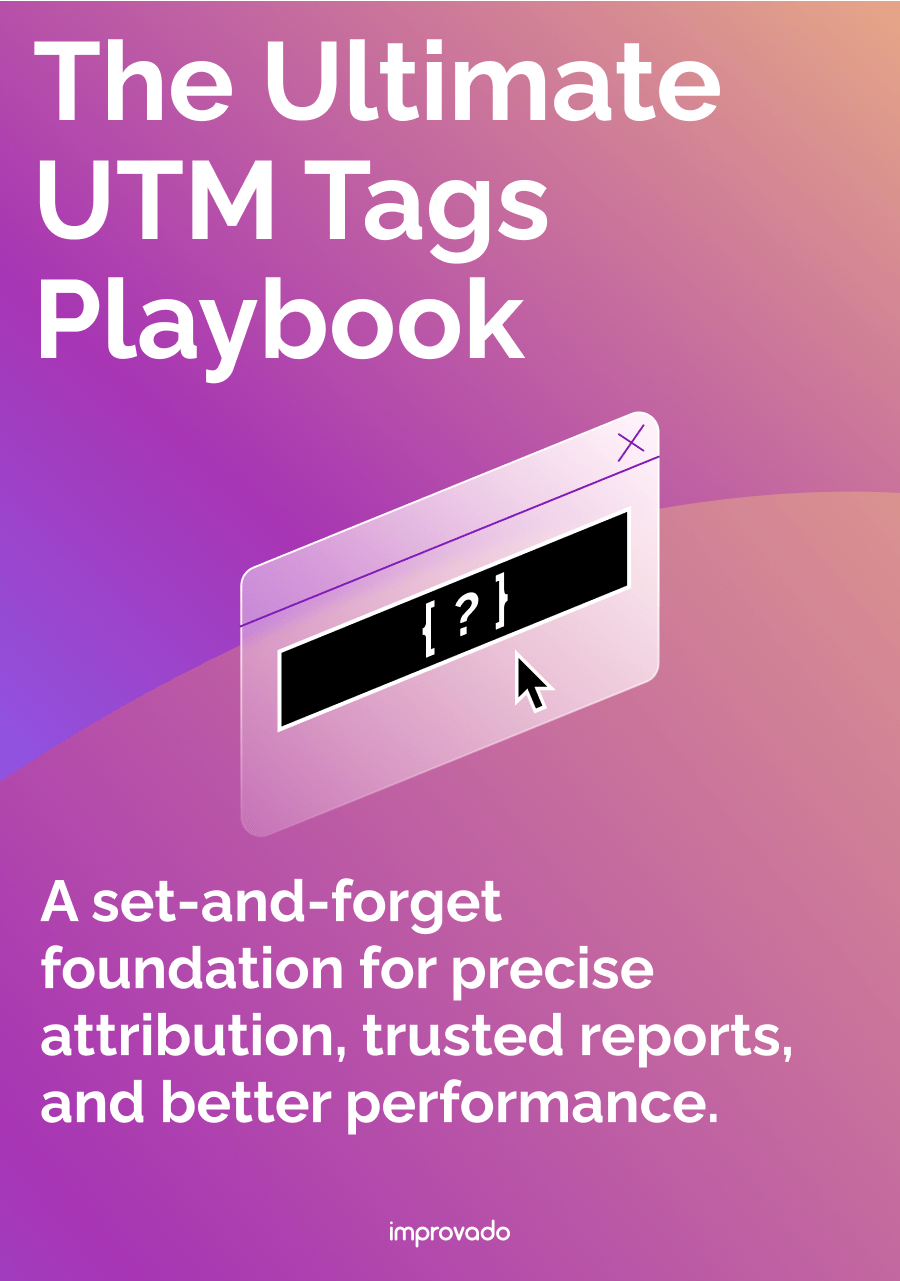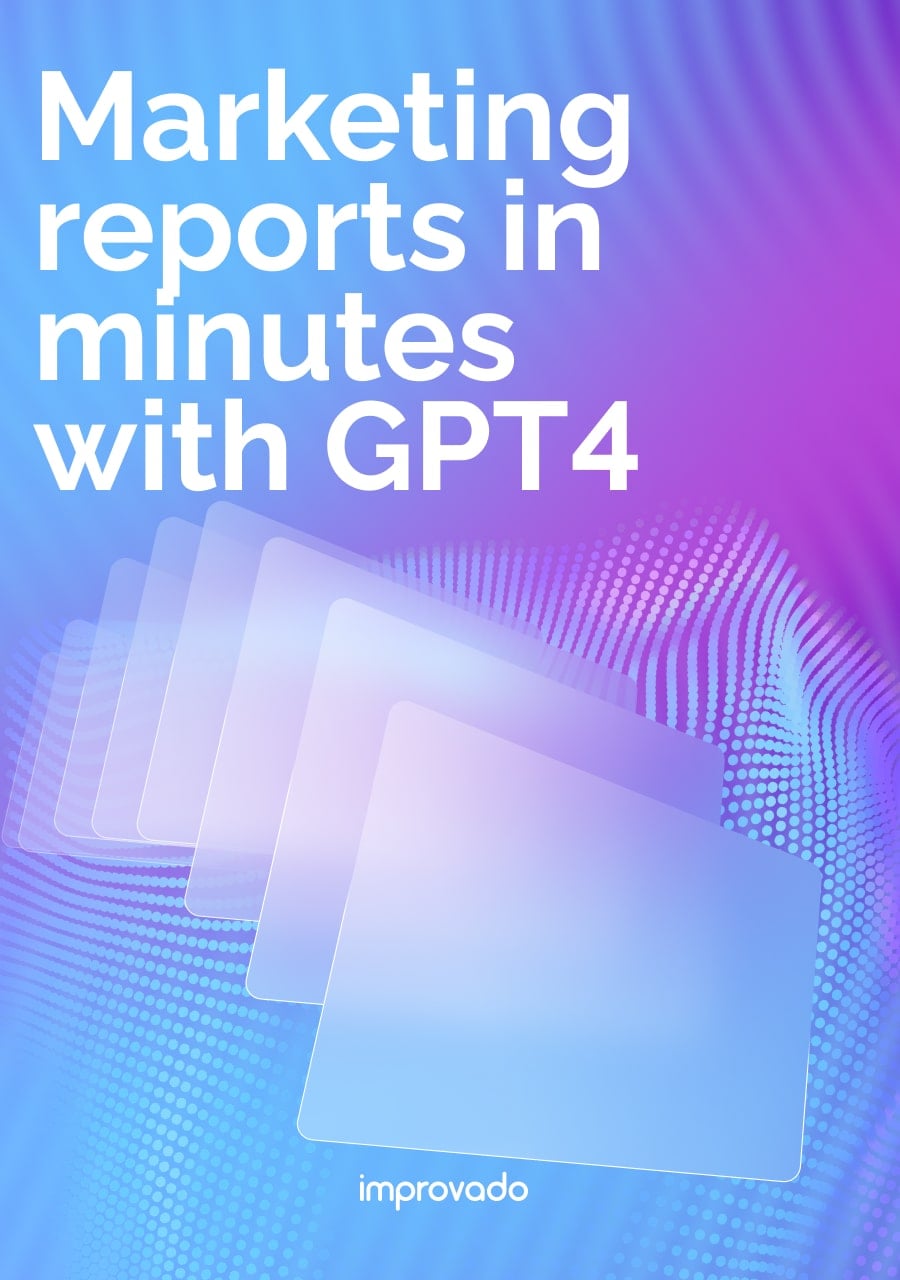McKinsey research shows that personalization can lead to a 10-15% revenue lift, with variations from 5 to 25% for companies in some industries. This data underscores the importance of personalizing advertising, a fundamental communication channel with prospects.
It's the reality of Dynamic Creative Optimization (DCO). DCO is a powerful advertising technology that automates ad creation in real time. It builds personalized ads based on data about the viewer, ensuring maximum relevance and impact.
This guide will provide a comprehensive look at DCO advertising. We will explore how it works, its benefits, the best platforms, and advanced strategies to help you dominate your market.
Key Takeaways:
- Definition: DCO is an ad technology that uses data to assemble personalized ads in real time, showing the right message to the right user at the right moment.
- Core Benefit: It dramatically increases ad relevance, leading to higher engagement, better conversion rates, and a stronger return on ad spend (ROAS).
- How it Works: DCO combines a library of creative assets (images, text, CTAs) with data signals (location, behavior, demographics) to generate thousands of ad variations automatically.
- Key to Success: A successful DCO strategy depends on high-quality data, a modular creative approach, and a powerful technology platform to manage the process.
What Is Dynamic Creative Optimization (DCO)?
Dynamic creative optimization, or DCO, is an advanced form of programmatic display advertising. It leverages technology to create personalized ads for individual users. Instead of creating one static ad for everyone, DCO builds an ad on the fly. It uses real-time data to select the best combination of creative elements for each impression.
This process ensures that the viewer sees an ad that is highly relevant to their interests, context, and past behaviors. DCO marketing transforms advertising from a one-to-many broadcast into a series of one-to-one conversations, all happening automatically and at immense scale.
Personalization at Scale
At its heart, DCO is about achieving personalization at scale. Marketers create a "master" creative template. This template has dynamic fields for different elements. These elements can include headlines, body copy, images, product names, prices, and calls-to-action (CTAs).
A data feed populates these fields based on specific rules and user data. The DCO platform then assembles the final ad just before it's served. This allows for virtually limitless variations from a single creative concept, tailored to each unique user.
DCO vs. Dynamic Content vs. Static Ads
It's important to distinguish DCO from similar concepts:
- Static ads are the traditional one-size-fits-all banners.
- Dynamic content might change a small part of an ad, like a city name.
- DCO is far more advanced. It optimizes the entire creative package based on performance data, using machine learning to find the winning combinations.
How Does DCO Advertising Actually Work?
Understanding the mechanics of DCO reveals its true power. The process happens in the milliseconds between a user loading a page and an ad appearing on their screen.
The DCO advertising workflow can be broken down into several key stages. Each stage plays a critical role in delivering the final personalized ad.
- Data Collection: The process begins with gathering data. This includes user demographics, browsing history, location, device, weather, and more.
- Audience Segmentation: Users are grouped into segments based on the collected data. This allows for more targeted messaging.
- Ad Request: When a segmented user visits a website with ad space, an ad request is sent to an ad exchange. This request contains information about the user and the context.
- Decision Engine: The DCO platform receives the ad request. Its decision engine analyzes the user data against the campaign's rules and goals.
- Dynamic Assembly: The engine selects the optimal creative components, including headline, image, CTA, etc., from the asset library. It assembles these into a complete ad in real time.
- Ad Serving: The newly assembled, personalized ad is served to the user on the webpage.
- Performance Feedback: The DCO platform tracks how the user interacts with the ad. This performance data is fed back into the system to refine future decisions. Machine learning algorithms learn which combinations work best for which audiences.
Key Components: Data Feeds, Creative Templates, and Decision Logic
Three core components make DCO possible.
- The data feed is a structured file (like a spreadsheet or XML) containing all the dynamic information. This could be product names, prices, images, and descriptions for an e-commerce campaign.
- The creative template is the visual shell of the ad, designed with placeholders for the dynamic elements.
- Finally, the decision logic consists of the rules and algorithms that connect the data to the creative template, deciding which content to show to which user.
The Core Benefits of Dynamic Creative Optimization
Adopting DCO offers significant advantages over traditional advertising methods. These benefits translate directly into better campaign outcomes and a more efficient marketing operation.
Hyper-Personalization and Increased Relevance
The primary benefit of DCO is its ability to deliver highly relevant ads. By tailoring messages to individual user contexts, ads become less intrusive and more helpful.
A user who just viewed a specific pair of running shoes can be shown an ad for those exact shoes, increasing the likelihood of a purchase.
Improved Campaign Performance and ROI
Relevance drives results. DCO ads consistently outperform static ads in key metrics. Higher click-through rates (CTR), conversion rates, and engagement are common outcomes.
This improved performance directly leads to a higher return on investment (ROI), as every ad dollar is spent more effectively.
Enhanced Efficiency and Scalability
Manually creating hundreds of ad variations is impossible. DCO automates this process. Creative teams can focus on developing high-quality core assets rather than endless adaptations.
This saves time and resources while allowing campaigns to scale effortlessly across numerous segments and scenarios.
Deeper Audience Insights Through Testing
DCO is a powerful testing tool. By constantly experimenting with different creative combinations, the system uncovers valuable insights. Marketers can learn which headlines resonate with specific demographics, which images drive clicks, and which CTAs lead to conversions. These learnings can inform the entire marketing strategy.
Strategic Implementation: A Practical Guide to Launching DCO Campaigns
A successful DCO campaign requires careful planning and execution. This step-by-step guide will walk you through the process from concept to optimization.
Step 1: Defining Clear Campaign Objectives and KPIs
Start with your goals. What do you want to achieve? Are you aiming for brand awareness, lead generation, or direct sales?
Your objectives will determine your Key Performance Indicators (KPIs). For an e-commerce campaign, this might be ROAS or conversion rate. For an awareness campaign, it could be engagement or video completion rate.
Step 2: Consolidating Your Data Sources
Your DCO strategy is only as good as your data. You need to gather and unify data from various sources. This includes your CRM, website analytics, third-party data providers, and customer databases. A clean, comprehensive dataset is crucial for creating accurate user profiles and effective segmentation.
Step 3: Developing a Modular Creative Asset Library
Think of your creative in terms of components. Instead of a single ad, you need a library of interchangeable parts. Develop multiple versions of each element:
- Headlines: Write various headlines targeting different value propositions.
- Images/Videos: Create visuals that appeal to different audience segments.
- Body Copy: Craft messages that address different pain points or interests.
- Calls-to-Action (CTAs): Test different phrases like "Shop Now," "Learn More," or "Get a Free Demo."
Step 4: Structuring Your Campaign Framework and Logic
This is where you define the rules for your DCO engine. You'll map data signals to creative elements.
For example, a rule might be: "If the user is in a location with rainy weather, show the creative featuring our waterproof jacket." You'll also set up audience segments and the creative strategies for each.
Step 5: Launch, Monitor, and Create a Feedback Loop
Once your campaign is live, continuous monitoring is key. Track your KPIs closely. The DCO platform will optimize automatically, but human oversight helps identify broader trends. Use the performance data as a feedback loop to refine your creative assets and targeting strategies for future campaigns.
Choosing the Right DCO Platform for Your Needs
The DCO platform is the technological heart of your strategy. Selecting the right one is a critical decision. Not all platforms are created equal, and the best choice depends on your specific needs, budget, and existing tech stack.
Key Features to Look For in a DCO Tool
When evaluating DCO software, consider these essential features:
- AI and Machine Learning: The platform should have robust algorithms for real-time optimization.
- Creative Management: Look for an intuitive interface for uploading assets and building templates.
- Data Integration: It must easily connect with your data sources (DMP, CDP, CRM).
- Multi-Channel Capabilities: The best platforms support DCO across display, video, social, and native advertising.
- Reporting and Analytics: Detailed, granular reporting is necessary to gain insights.
Top DCO Platforms: A Comparative Overview
The DCO market includes large ad tech suites and specialized providers.
Major players like Google Marketing Platform (Studio) and Adobe Advertising Cloud offer integrated DCO capabilities. Specialized vendors often provide more advanced features or cater to specific industries.
Evaluating them on a common set of criteria is essential.
Data: The Fuel for High-Performing DCO
Data is the lifeblood of any DCO campaign. The quality, variety, and accessibility of your data directly impact your ability to personalize effectively.
A robust data strategy involves combining different types of information to build a holistic view of the customer.
First-Party vs. Third-Party Data in DCO
First-party data is information you collect directly from your audience. This includes website behavior, purchase history, and CRM data. It is the most valuable and accurate data for DCO.
Third-party data is collected and sold by data aggregators. It can be used to enrich your first-party data or for prospecting new audiences.
Contextual Signals: Weather, Location, and Time of Day
Contextual data provides information about the user's current environment. Showing an ad for a cold drink on a hot day or promoting a local store to a user nearby are simple but effective examples. Advanced DCO uses these signals to make ads feel timely and relevant.
Behavioral Data: Past Purchases and Browsing History
Behavioral data is a powerful predictor of intent. A user who has repeatedly browsed a product category is a prime candidate for a targeted ad. Retargeting past purchasers with complementary products is another highly effective DCO tactic that relies on behavioral data.
Advanced DCO Strategies to Maximize Performance
Once you've mastered the basics, you can deploy more sophisticated DCO strategies. These advanced tactics can further elevate your campaign performance and create more engaging customer experiences.
Sequential Messaging and Storytelling
Instead of showing the same ad repeatedly, use DCO to tell a story over time. A user might first see an ad introducing a problem, then a second ad presenting your product as the solution, and finally, a third ad with a compelling offer. This builds a narrative and guides the user down the funnel.
Retargeting with Dynamic Product Ads
This is a cornerstone strategy for e-commerce. Connect your product feed to your DCO platform to automatically show ads featuring the exact products a user has viewed, added to their cart, or purchased in the past. This is one of the highest-returning tactics in digital marketing.
Applying DCO to Social Media Advertising
DCO is not limited to display ads. Platforms like Meta (Facebook/Instagram) have powerful native DCO capabilities. You can dynamically combine audiences, placements, creatives, and copy to find the most effective combinations. This requires a deep understanding of social media analytics to interpret the results and refine your strategy.
Measuring DCO Success: Key Metrics and Analytics
Measurement is critical for proving the value of DCO and for continuous improvement. A proper analytics framework allows you to understand not just what is working, but why it's working.
Moving Beyond CTR: Engagement and Conversion Metrics
While Click-Through Rate (CTR) is an important metric, it doesn't tell the whole story. Look at post-click metrics like conversion rate, cost per acquisition (CPA), and return on ad spend (ROAS).
Also, consider engagement metrics such as interaction rates or video view-through rates for a more complete picture of performance.
Using KPI Dashboards to Visualize DCO Results
With thousands of ad variations, manually sifting through data is impossible. Using powerful KPI dashboards is the only way to effectively visualize performance.
These tools can help you quickly identify top-performing creative elements, audience segments, and overall campaign trends at a glance.
The Role of Marketing Attribution Models in Understanding DCO's Impact
DCO often plays a role at multiple points in the customer journey. Understanding its true contribution requires a sophisticated measurement approach.
Implementing advanced marketing attribution models helps you assign proper credit to your DCO campaigns and understand their influence on the final conversion.
Common DCO Challenges and How to Overcome Them
While powerful, implementing DCO is not without its challenges. Being aware of these potential hurdles allows you to plan ahead and develop strategies to mitigate them effectively.
Managing Creative Complexity and Production
The need for a library of modular assets can be demanding for creative teams.
Solution: Establish clear workflows and use creative management platforms. Develop templates and guidelines to streamline the asset creation process, allowing teams to focus on quality over quantity.
Ensuring Data Quality and Privacy Compliance
Poor data quality leads to poor personalization. Additionally, privacy regulations like GDPR and CCPA are major considerations.
Solution: Invest in data governance and hygiene. Implement a robust data integration process to ensure accuracy. Always prioritize user privacy and transparency in your data practices.
The Need for Robust Reporting Automation for Timely Insights
The sheer volume of data generated by DCO can be overwhelming. Waiting for manual reports means missing opportunities for optimization.
Solution: Use tools that offer reporting automation. This provides real-time access to performance data, enabling your team to make faster, more informed decisions.
Conclusion
The value of DCO isn’t just in generating thousands of creative variations. It’s in knowing which combinations resonate, which audience-variable pairings outperform, and how real-time conditions influence results across channels.
Improvado AI Agent closes this gap by giving teams immediate, plain-language answers to performance questions grounded in unified campaign data. Instead of combing through dashboards, you can ask, “Which creative elements are driving lift in retargeting?” or “Did yesterday’s variations improve ROAS?” and get a direct, context-aware response.
This level of instant insight turns DCO from an automated creative engine into a tightly optimized, continuously improving system.
To see how AI-driven interpretation can accelerate your DCO workflow, request a demo.
.png)




.png)
